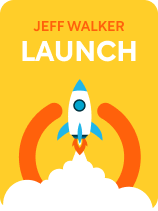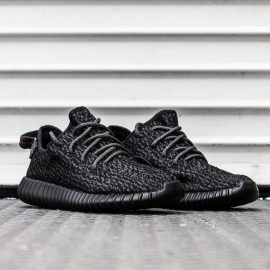

This article is an excerpt from the Shortform book guide to "Launch" by Jeff Walker. Shortform has the world's best summaries and analyses of books you should be reading.
Like this article? Sign up for a free trial here.
What should you promise your subscribers? Should you use paid advertising to grow your contact list? What’s a “squeeze page”?
Whether you’re starting with a vague business idea or a fully-developed product, Jeff Walker says that creating and growing an email list is the first step to a successful product launch. He provides several tips on starting and growing a subscriber list.
Read more to learn how to build an email list and stay connected with your customers and prospective customers.
How to Build an Email List
The Internet enables you to access a wider pool of potential customers, and encouraging people to subscribe to your content helps you stay connected and form lasting business relations. Walker shares his advice on how to build an email list within this context.
(Shortform note: Research corroborates Walker’s recommendation to use email as a primary way to contact your customers. According to a 2023 study, email remains the main form of business communication, reporting that over 333 billion emails are sent every day. While newer online platforms, such as Tiktok or Discord are attracting the attention of marketers, experts predict that email usage will continue to grow in the coming years.)
Start Your List
Before you even mention your product, attract followers who are interested in receiving regular emails from you. To start building an email list, Walker suggests you:
1) Develop your promise. In other words, figure out the core reason people should subscribe to your list. To do this, consider something free and valuable that you can offer through email. For example, if your (current or future) business promise is to improve mental health and wellness, you might deliver on this promise through weekly newsletters with self-care tips and positive quotes.
(Shortform note: When developing your promise, Al Ries and Jack Trout in Positioning recommend you over-simplify your message. They explain that people’s brains can only retain a few ideas at a time, so having a clear and straightforward message helps you catch people’s attention.)
2) Identify your target market. Walker suggests looking for a specific group of people whose needs or wants could be met by your product. Examine the demographics to get a better sense of how to market to them. For instance, think about what particular age range you want to appeal to the most.
(Shortform note: In The 4 Hour Work Week, Tim Ferriss says you shouldn’t limit your search to people who currently fit in your market. Also, consider people who want to fit into your product demographic. For example, if you’re producing pet-related content, don’t restrict yourself to pet owners—consider people who might be interested in getting a pet.)
3) Create a “squeeze page”—a landing page on your website that gives visitors the choice to either subscribe to the email list or leave. Walker states that, even if a majority of people leave without signing up, having a small group of responsive followers you can keep in contact with is better than having many contacts who rarely open your emails.
(Shortform note: To create an effective squeeze page, experts recommend you develop a digital resource—such as a behind-the-scenes video, a discount code, or a newsletter—and showcase it visually with a photo or a video. Keep it concise and relevant, and consider adding testimonials that enhance your authority.)
4) Encourage people to subscribe with an enticing offer. Give people an immediate incentive to sign up. This should be something free and specific, such as an exclusive worksheet on anxiety.
(Shortform note: Offering an incentive to subscribe encourages people because of instant gratification—we tend to want positive rewards now rather than to wait for satisfaction. For example, you might have gorged on the free bread offered at restaurants, only to find yourself too full to eat your meal. Similarly, your small, free incentive is like a restaurant’s free bread. While you’re eager to bring your product to the table, an immediate incentive will attract a lot more engagement early on.)
Grow Your List
Now that we understand how to acquire a list, how can we grow it? In other words, how do we get more people to see our squeeze page? Walker suggests three methods of promoting traffic to your page: organic traffic, social media, and paid advertising.
1) Organic Traffic—Drive traffic to your page by getting your website to appear higher up in the search engine’s results. This increases the likelihood that people will come across your page.
(Shortform note: But how do you get to the top of Google’s search results? The process is called search engine optimization (SEO), which involves improving your site’s ranking through various techniques such as putting keywords in your title tag or improving the speed at which your site loads. Learning to apply good SEO practices is important to getting natural traffic since only 0.63% of Google users click on a result beyond the first page.)
2) Social Media—Use social media as a tool to draw attention and direct people to your email list. By social media, Walker’s referring to platforms that allow people to connect, follow, and share content like Facebook. He explains that there are advantages and disadvantages to using social media for your product launch:
Advantages: Social media platforms make it easy for people with similar interests and desires to gather together. This, in turn, makes it easier for you to discover and interact with these communities.
Disadvantages: Unlike email, Walker argues that social media platforms lack stability and risk falling into disuse. He adds that, since you don’t own the platform, your accounts can get shut down for arbitrary reasons. Ultimately, Walker suggests using social media to channel people to your email list and to spread awareness of your product but cautions against relying on it solely to market your product.
(Shortform note: Research supports Walker’s caution against only using social media to market your product, finding that social channels result in significantly lower conversion rates than email. However, you can use social media to aid your launch. Experts recommend you use hashtags to make it easy for people to get involved and suggest you decide on a single one that is unique, memorable, and clear.)
3) Paid Advertising—Use paid advertising to drive more people to your landing page and email list. In digital marketing, this involves spending money to display your promotions on relevant platforms so that more people can discover your brand, such as Google Ads. Walker says you should approach paid advertising differently depending on who you’re targeting: those already familiar with you (warm traffic) versus those unfamiliar with you (cold traffic).
For cold traffic, use paid ads to convert them into warm traffic by guiding them to your opt-in page. For warm traffic, focus your paid advertising later on in your launch process to encourage your prospects to purchase your product.
| Ad Blockers and Banner Blindness Walker suggests using paid ads to promote your launch, but how can you be sure that your ads are effective? According to a 2022 study, 42.7% of people worldwide use ad blockers. These tools remove ad content from web browsers, which can pose a problem when you’re trying to get paid traffic for your launch. Many people state, however, that they are fine with ads as long as they aren’t annoying or disruptive. Yet, another problem remains—when people aren’t blocking ads, they’re ignoring them. With advertisements populating practically every corner of the Internet, many users experience “banner blindness,” which means that people subconsciously ignore parts of a page that seem like they could be ads based on factors such as location and appearance. To avoid this, experts suggest creating visually-unique designs, having a clear and attractive message, or adding interactive features. |

———End of Preview———
Like what you just read? Read the rest of the world's best book summary and analysis of Jeff Walker's "Launch" at Shortform.
Here's what you'll find in our full Launch summary:
- How to stand out in an age when anyone can start a business online
- How you can market and sell a product with little to no start-up costs
- Why you should start an email list before you even launch your product






